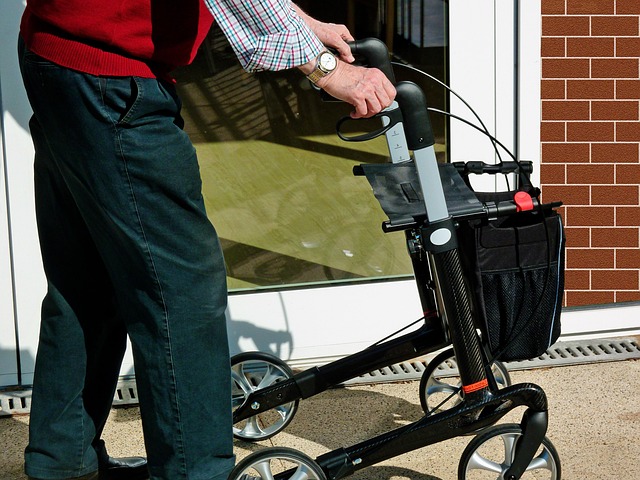Find Your Perfect Senior Home: Supportive, Safe, and Tailored to You
Choosing the right senior home requires careful consideration of various factors including care levels, safety features, community atmosphere, and financial implications. With numerous options available across the UK, from independent living communities to specialized care facilities, understanding what each type offers can help you make an informed decision that aligns with personal needs and preferences.

The journey to finding suitable senior accommodation involves navigating a complex landscape of care options, each designed to meet different levels of independence and support requirements. From retirement villages that promote active lifestyles to residential care homes providing comprehensive assistance, the variety can seem overwhelming without proper guidance.
Understanding Senior Living Options
Senior housing encompasses several distinct categories, each serving different needs and preferences. Independent living communities cater to active seniors who require minimal assistance but desire the security and social benefits of a managed environment. These facilities typically offer maintenance-free living with optional services like housekeeping and meal plans.
Assisted living facilities provide a middle ground, offering personal care support while maintaining resident independence. Services often include medication management, assistance with daily activities, and 24-hour emergency response systems. For those requiring more intensive support, residential care homes deliver comprehensive care including nursing services and specialized dementia care.
Retirement villages represent another popular option, combining independent living with graduated care services. These communities often feature recreational facilities, healthcare services on-site, and the ability to transition between care levels as needs change.
Key Factors in Finding the Ideal Senior Home
Location plays a crucial role in senior home selection, affecting everything from family visits to healthcare access. Proximity to medical facilities, public transportation, and familiar neighborhoods can significantly impact quality of life and adjustment periods.
Staff qualifications and training standards vary considerably between providers. Quality facilities maintain appropriate staff-to-resident ratios, employ qualified care professionals, and provide ongoing training programs. Researching staff credentials and facility inspection reports helps ensure adequate care standards.
Social activities and community engagement opportunities contribute significantly to resident wellbeing. Facilities offering diverse programming, from fitness classes to educational seminars, tend to foster more vibrant communities and better resident satisfaction rates.
Evaluating Safety and Support Features
Safety infrastructure forms the foundation of quality senior housing. Essential features include emergency call systems in all living areas, secure entry systems, well-lit pathways, and grab bars in bathrooms. Fire safety systems, including sprinklers and evacuation procedures, require particular attention during facility evaluations.
Medical support availability varies significantly between facility types. Some communities employ registered nurses on-site, while others coordinate with external healthcare providers. Understanding medication management protocols, emergency response procedures, and healthcare coordination services helps assess whether a facility can meet specific medical needs.
Accessibility features ensure long-term suitability as mobility needs change. Wheelchair-accessible entrances, elevators, wide doorways, and adapted bathrooms accommodate various physical limitations and support aging in place.
Exploring New Senior Homes and Communities
The senior housing market continues expanding, with new developments incorporating modern amenities and innovative care approaches. Contemporary facilities often feature smart home technology, wellness centers, and environmentally sustainable designs that appeal to today’s seniors.
Visiting potential communities during different times and days provides insight into daily operations and community atmosphere. Observing meal services, activity programs, and staff interactions offers valuable perspectives beyond formal tours.
Speaking with current residents and their families provides firsthand accounts of facility strengths and challenges. Many communities facilitate these conversations during visit days or through resident councils.
Understanding Senior Living Costs and Options
Senior housing costs vary significantly based on location, facility type, and service levels. Understanding pricing structures helps families budget appropriately and explore funding options.
| Facility Type | Average Monthly Cost | Services Included | Additional Fees |
|---|---|---|---|
| Independent Living | £1,500-£3,500 | Accommodation, basic maintenance | Meals, housekeeping, activities |
| Assisted Living | £2,500-£4,500 | Personal care, meals, activities | Medical services, specialized care |
| Residential Care | £3,000-£6,000 | Full care, nursing, meals | Personal items, therapy services |
| Dementia Care | £4,000-£7,500 | Specialized care, secure environment | Additional therapies, family support |
Prices, rates, or cost estimates mentioned in this article are based on the latest available information but may change over time. Independent research is advised before making financial decisions.
Funding options include personal savings, property sales, local authority support, and specialized insurance products. The NHS may cover certain medical costs, while local councils provide means-tested support for eligible residents. Understanding these funding mechanisms early in the selection process prevents financial surprises.
Many facilities offer flexible payment structures, including entrance fees with reduced monthly costs or all-inclusive monthly arrangements. Comparing total costs over expected residency periods helps identify the most economical options.
Making the Final Decision
Selecting senior housing represents a significant life transition requiring careful consideration of current needs and future requirements. Creating a checklist of essential features, preferred amenities, and deal-breaker issues helps maintain focus during the evaluation process.
Involving family members in decision-making ensures support systems remain intact and communication channels stay open. Professional guidance from geriatric care managers or social workers can provide objective assessments and advocacy during the selection process.
The right senior home should feel like a natural extension of personal lifestyle while providing necessary support and safety features. Taking time to thoroughly evaluate options leads to better long-term satisfaction and successful transitions to this new phase of life.




